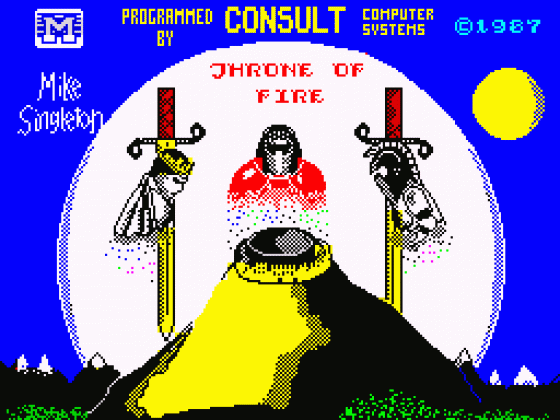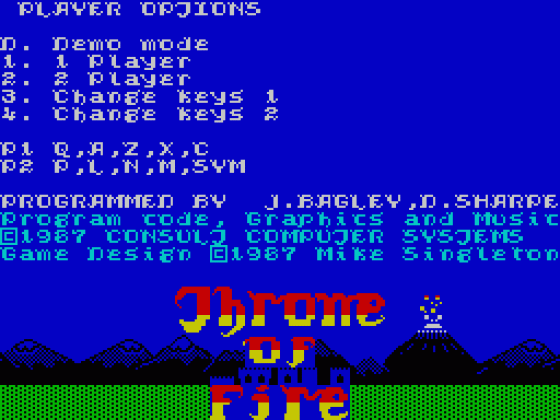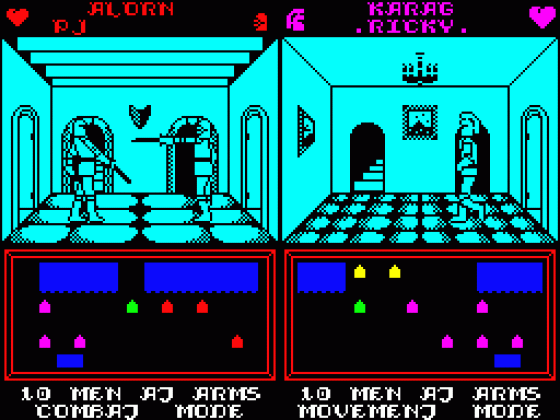Other Reviews Of Throne Of Fire For The Spectrum 48K/128K
Throne Of Fire (Melbourne House)
A review by Ben Stone (Crash)
Throne Of Fire (Melbourne House)
A review by Tony Lee (Your Sinclair)
Throne Of Fire (Melbourne House)
A review by Jack Daniel (Sinclair User)
Throne Of Fire (Melbourne House)
A review
Throne Of Fire (Melbourne House)
A review


 1st June 1987
1st June 1987







